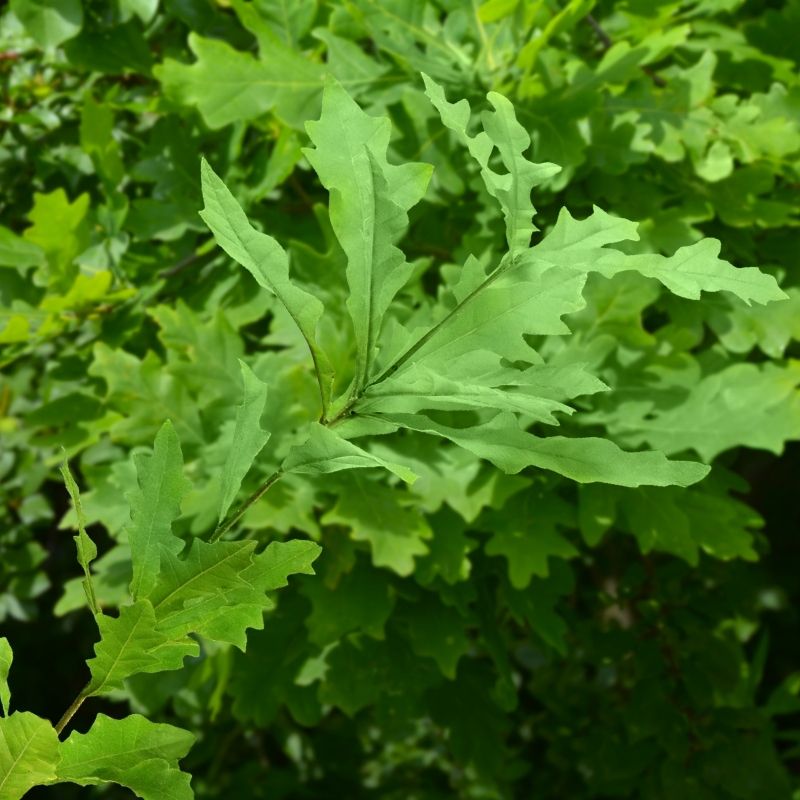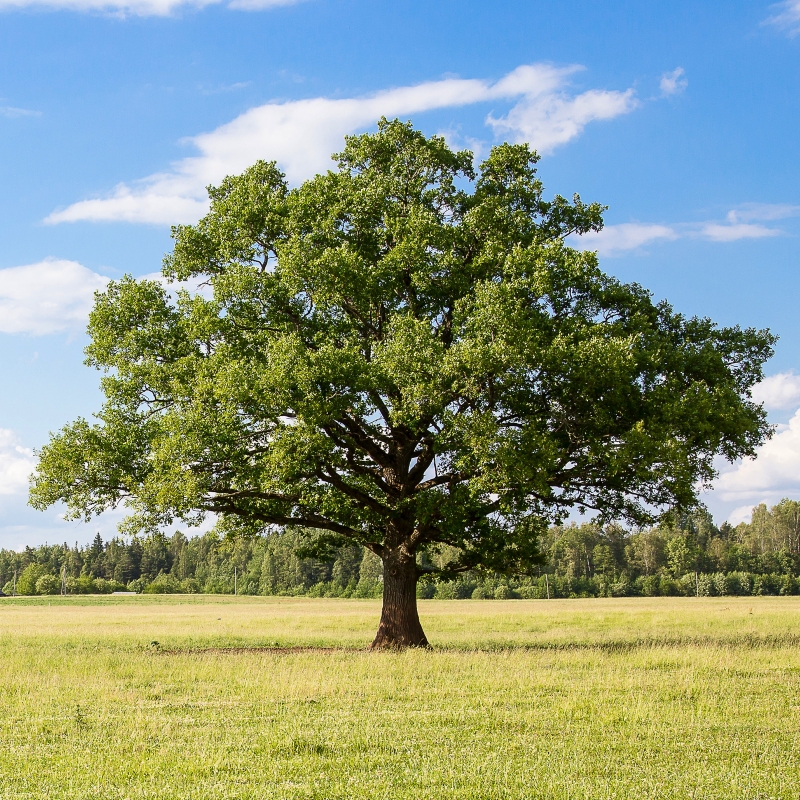



Deciduous Overcup Oak Tree
Quercus lyrata Overcup Oak
82 reviews
Deciduous Overcup Oak Tree
Quercus lyrata Overcup Oak
82 reviews
- Adaptable to a variety of soil types
- Tolerant of wet conditions
- Beautiful fall color display
- Recommended by landscape designers for optimal fit in real yards
$112.00
$160.00
30% Off
- Ships to in 3-5 Days
- Free Shipping Over $150
- Plant Arrival Guarantee
- In Stock
- Free Plant Consult
$200 - Landscape-Approved: Every Plant We Sell Comes With Design Expertise Behind It
Trade 3 Gallon
We are sorry, product is currently out of stock due to seasonal availability. Please check the "Related plants available in your area" section below
Not just beautiful - intentionally selected by ShrubHub's 3D landscape design team to fit real-world spaces and maximize yard potential.
Why Deciduous Overcup Oak Tree?
The Deciduous Overcup Oak Tree, also known as Quercus lyrata, is a stunning addition to any landscape with its distinctive acorns that are encased in a mossy cap. This tree is known for its large, rounded crown and beautiful green leaves that turn a vibrant yellow in the fall. It is a hardy and adaptable tree that thrives in a variety of soil types.
Sunlight
The Deciduous Overcup Oak tree requires full sun to thrive, meaning it needs direct sunlight for at least 6-8 hours a day. This tree is known to be drought-tolerant and prefers well-drained soil, making it a great choice for landscaping in sunny locations.
Watering
Deciduous Overcup Oak trees require regular watering, especially during the first few years of growth. They prefer moist, well-draining soil and should be watered deeply to encourage deep root growth. During periods of drought, it may be necessary to provi
Fertilizing
Deciduous Overcup Oak Trees benefit from a balanced fertilizer with an N-P-K ratio of 10-10-10 in the early spring before new growth appears. It is important to avoid excessive nitrogen fertilization, as this can cause rapid growth that may weaken the tree
Deciduous Overcup Oak Tree (Quercus lyrata Overcup Oak)
The Deciduous Overcup Oak Tree, also known as Quercus lyrata Overcup Oak, is a stunning and hardy tree that is native to North America. This tree is known for its beautiful rounded crown and unique acorns that are mostly enclosed by a knobby cup, hence the name Overcup Oak.
The Overcup Oak has distinctive grayish-brown bark that is deeply furrowed, adding to its charm. In the fall, the leaves of this tree turn a beautiful mix of red, orange, and brown, providing a spectacular display of autumn color.
This tree is adaptable to a variety of soil types and thrives in full sun to partial shade. It is a low-maintenance tree that requires minimal pruning and care once established. The Overcup Oak is also tolerant of wet conditions and is a great choice for planting near ponds or streams.
With its attractive foliage, unique acorns, and low-maintenance nature, the Deciduous Overcup Oak Tree is a great addition to any landscape. Plant one today and enjoy its beauty for years to come!
Plant Information:
| Botanical Name: | Quercus lyrata Overcup Oak |
| USDA Zones: | 5 - 9 |
| Mature Height: | 70 FT |






Pollination Info
Pollination Information for Deciduous Overcup Oak Tree (Quercus lyrata Overcup Oak)
The Overcup Oak tree is monoecious, meaning it has both male and female flowers on the same tree. The male flowers, located on catkins, release pollen which is then carried by the wind to the female flowers in order to fertilize them.
Overcup Oak trees are primarily wind-pollinated, although some insect pollination may occur. The male flowers produce a large amount of pollen to increase the chances of successful pollination.
Pollination usually takes place in the spring when the tree is in full bloom. Once the female flowers have been fertilized, they develop into acorns which are the tree's seeds.
It is important to plant Overcup Oak trees in close proximity to ensure successful pollination. The trees also require proper sunlight, soil conditions, and moisture levels to support healthy pollination and fruit production.
FAQ
Deciduous Overcup Oak Tree FAQ
What is a Deciduous Overcup Oak Tree?
The Deciduous Overcup Oak Tree, also known as Quercus lyrata Overcup Oak, is a large deciduous tree native to North America. It is known for its distinctive cup-shaped acorns and lobed leaves.
How tall can a Deciduous Overcup Oak Tree grow?
Deciduous Overcup Oak Trees can grow up to 50-80 feet tall and have a spread of 50-60 feet.
What are the ideal growing conditions for a Deciduous Overcup Oak Tree?
Deciduous Overcup Oak Trees prefer full sun to partial shade and well-drained, moist, acidic soil. They are tolerant of wet soil conditions and can withstand occasional flooding.
How do I care for a Deciduous Overcup Oak Tree?
Water newly planted trees regularly to help establish the root system. Once established, Deciduous Overcup Oak Trees are fairly low maintenance and only require occasional watering during prolonged dry periods. Prune as needed to maintain shape and remove dead or damaged branches.
When do Deciduous Overcup Oak Trees typically bloom?
Deciduous Overcup Oak Trees bloom in spring, usually around April to May. The flowers are not very showy, but the tree produces small greenish-yellow male and female flowers on separate branches.
Are Deciduous Overcup Oak Trees prone to any diseases or pests?
Deciduous Overcup Oak Trees are generally resistant to many pests and diseases. However, they can sometimes be affected by oak wilt, powdery mildew, and various types of borers. Proper care and maintenance can help prevent these issues.
Do Deciduous Overcup Oak Trees have any special uses?
Deciduous Overcup Oak Trees are commonly used in landscaping for their attractive foliage, acorns that attract wildlife, and their ability to tolerate wet soil conditions. They also provide excellent shade and can be used as a street tree.
Planting & Care
Planting & Care for Deciduous Overcup Oak Tree
Planting:
- Choose a planting location with full sun and well-draining soil.
- Dig a hole that is twice as wide and just as deep as the tree's root ball.
- Place the tree in the hole, making sure the top of the root ball is level with the ground.
- Backfill the hole with soil and tamp it down gently to remove air pockets.
- Water the tree thoroughly after planting.
Care:
- Water the tree regularly, especially during the first few years of growth.
- Mulch around the base of the tree to retain moisture and suppress weed growth.
- Prune the tree as needed to remove dead or damaged branches.
- Fertilize the tree in the spring with a balanced fertilizer.
- Watch out for pests and diseases, and treat accordingly.
- Protect the tree from strong winds and extreme temperatures.
Check Out These Verified Customer Reviews:
Customer Reviews
4.7 out of 5 based on 82 reviews
Thank you! Your review has been submitted.
Great quality tree, looks even better in person.
Customer service was helpful but could be more responsive.
The website was easy to navigate, purchasing was a breeze.
Item has been added to your cart.


